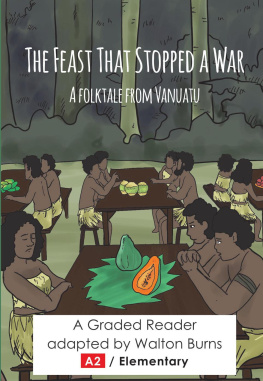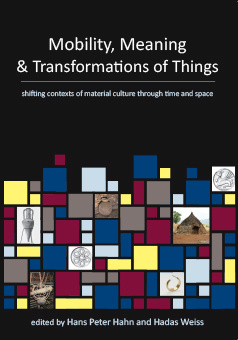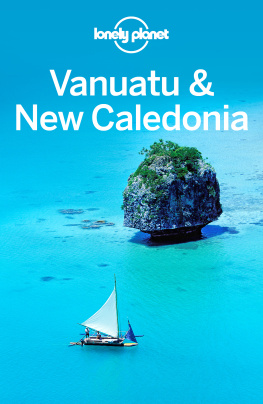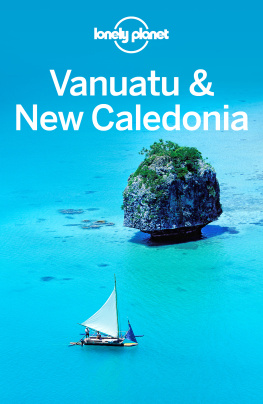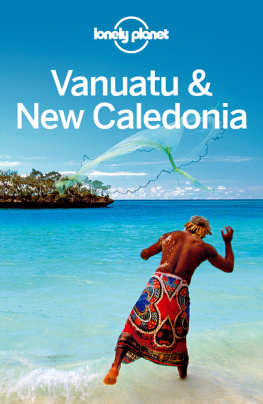Artifak
Artifak
Cultural Revival, Tourism,
and the Recrafting of History
in Vanuatu

Hugo DeBlock

First published in 2019 by
Berghahn Books
www.berghahnbooks.com
2019 Hugo DeBlock
All rights reserved. Except for the quotation of short passages for the purposes of criticism and review, no part of this book may be reproduced in any form or by any means, electronic or mechanical, including photocopying, recording, or any information storage and retrieval system now known or to be invented, without written permission of the publisher.
Library of Congress Cataloging-in-Publication Data
A C.I.P. cataloging record is available from the Library of Congress
British Library Cataloguing in Publication Data
A catalogue record for this book is available from the British Library
ISBN 978-1-78920-042-3 hardback
ISBN 978-1-78920-043-0 ebook

Contents

Illustrations
)

Acknowledgments
The research for this book was undertaken in Vanuatu, for longer and shorter periods of time between 2008 and 2013, while I was affiliated with The University of Melbourne. I wish to thank the University of Melbourne for various sources of funding. At Melbourne, also, I wish to thank Mary Patterson, for sharing her knowledge and for introducing me into the family that she worked with and has known for many years in North Ambrym, and Martha MacIntyre, for being instrumental in the last stages of writing up the research. I also wish to thank my Melbourne-Vanuatu peer Benedicta Rousseau as well as Julienne Corboz, Gillian Tan, Bob Swinburn, Nadiya Chushak, Mari Fitzpatrick, Megan Lafferty, and Anas Gerard. At UC Berkeley, thank you to my former teachers Laura Nader and Nelson Graburn, for your continuing support and trust, and to my Berkeley Anthropology of Tourism group of peers and friends.
In Belgium, home, thank you to my first teacher Elze Bruyninx, former chair of Ethnic Arts at the University of Ghent, who unfortunately died too soon to see this work come to an end, and to Wilfried Van Damme, who was the first one to introduce me to the anthropology of art. In Vanuatu, I owe a special thank you to former Vanuatu Cultural Centre directors Ralph Regenvanu and Marcellin Abong; to current director Richard Japuneyo; to Cultural Centre staff members Sam Jacob Kapere, Ambong Thompson, and Evelyne Bulegih; and at the library, to Anne Naupa and June Bela Norman. At the Malakula Cultural Centre, thank you to Fred Numa Longga. Of my Vanuatu peers across the world, a bigfella thank you to Michael Franjieh and Daniela Kraemer. Thank you also to Sarah Lightner in those first instrumental years in Vanuatu, to Tessa Fowler, and to former National Geographic photographer Kal Muller for the correspondence and for providing me access to his Ambrym and Pentecost photographs of the 1960s1970s.
My utmost gratitude goes to the people in Vanuatu who participated in the research and who showed hospitality and generosity throughout my fieldwork. I am deeply thankful to my host family in North Ambrym for taking me in and providing me with shelter, support, and advice. Thank you Chief Johnson Lengkon Koran in Fona, Jenny, Jeffrey, Masi, Sandy, Tarsisia, Philippe, George, Ronald, Lisa, Inette, and little stronghed Tewar, always by my side. A bigfella thank you to Gemgem in Bwehaltalam for sharing his wisdom and knowledge with me, and to Moise, Petronilla, and young Johnson. Thank you to Saksak Batokon in Fansar, Chief Justin Ramel and David Jacky Tubuvi in Magam, Chief Sekor in Saint-Louis, Norbert Nabong in Olal, Benedicta Lising Tiningkon and Job in Halhal Tawor, Lafu and Jacky Sawan and Annie Willy in Nehatling, Chiefs Magekon and Bongmeleun, James Bae Roromal and Freddie Bule in Fanla, and Solomon Laan Douglas in Ranon. Thank you also to the Back to My Roots group of performers Eli Tiworwor, Alexis Massing, Andr Sawan, Gratiano Tamtam, Pierre Saksak, Michel Saksak, Frederick Bongnaim, Touissant Bongnaim, Armand Kitor, Ignace Tibal, Pascal Linban, Roland Lakon, Pascal Melip, Danil Lewa, Louis-Marie Bule, Atel Thomas, Clement Kilfan, Nol Lolo, Elysee Malmeleun, Lucy Malihar Tiningkon, Marie Vianey, Julia Maku, and Eliane Yewkon, and to Moses Toa, Stuart Nato, and Timothy Taitai from Ambae and Roy Apia from Epi Island.
On Malakula, I owe a special thank you to Jacky and Herna Abong and their families in Lamap, for warmly welcoming me during my time there. In Lamap, also, thank you to Danil and Fabrice Leymang. On Avok, thank you to Chief Andrew Nakel and my friend Frank Whitley. In North Malakula, I wish to thank big nambas Chief Virembat of Unmet. In the Banks Islands, I thank Eli Field in Turmalau and Chief Godfrey Manar in Vureas Bay and Reginald Tarilaka in Sola, Vanua Lava. On Ra, I thank Father Luke Dini, Rona, Patteson, Charles Wotlalan, Roger Ryan, Basil Noah, Chief Johnson Wotleling, Chief Joseph Golden, Frank Wetford, Joshua Alfred, and my brother Silas. In Port Vila, I thank Wilfred and Helen Koran for their hospitality, George Bumseng, Kathy Nifia, and artists Emmanuel Watt, Sero Kauatonga, Juliette Pita, and Moses Jobo. In Sion, Switzerland, I owe gratitude to Csar Tofor, son of the renowned Tofor of Fanla for the correspondence. Of the tourists I met during fieldwork, I wish to thank Sylvie Egrotti and Michel Kirch and Jim and Katie Coolbaugh.
Everyone, thank you, merci beaucoup, tangkiu tumas,
Lo Not Ambrym, sipa gatlam,
Your son, Luan

Introduction
Art and Commodity in Vanuatu
On arrival in a small boat at the village of Fona, in North Ambrym, for the first time in August 2009, I was immediately confronted with a black sand beach piled up with the typical North Ambrymese slit-drums and bwerang, or tree fern figures, to be shipped off, in that case to Paris, France. Such a scene sums up quite accurately what I came to study in Vanuatu. So, was it really going to be this easy, or was I just very lucky to have come at this particular moment? As it turned out, it was going to be both easy and difficult at the same time. North Ambrym is indeed very much still piled up with slit-drums (the easy part), but, as I later learned, most of them do not get sold so easily as was the case that one evening when I arrived for the first time (the not so easy part). In turn, this provided opportunities to investigate why local people in North Ambrym today still produce slit-drums and what really happens to them if they are not shipped off to the West after some time.
I say after some time because, ideally, drums stand in North Ambrym villages or on beaches of yacht anchorages such as that of Nobul, just north of Fona, or sometimes in their rightful place, on a har or ritual ground away from the villages, because they need to age, or at least look old, before they are sold and shipped off to Australia, Europe, or the United States. Buyers who come in do not really have to stress this anymore. Local people know as well as anyone that their drums, in North Ambrym language called
Next page

